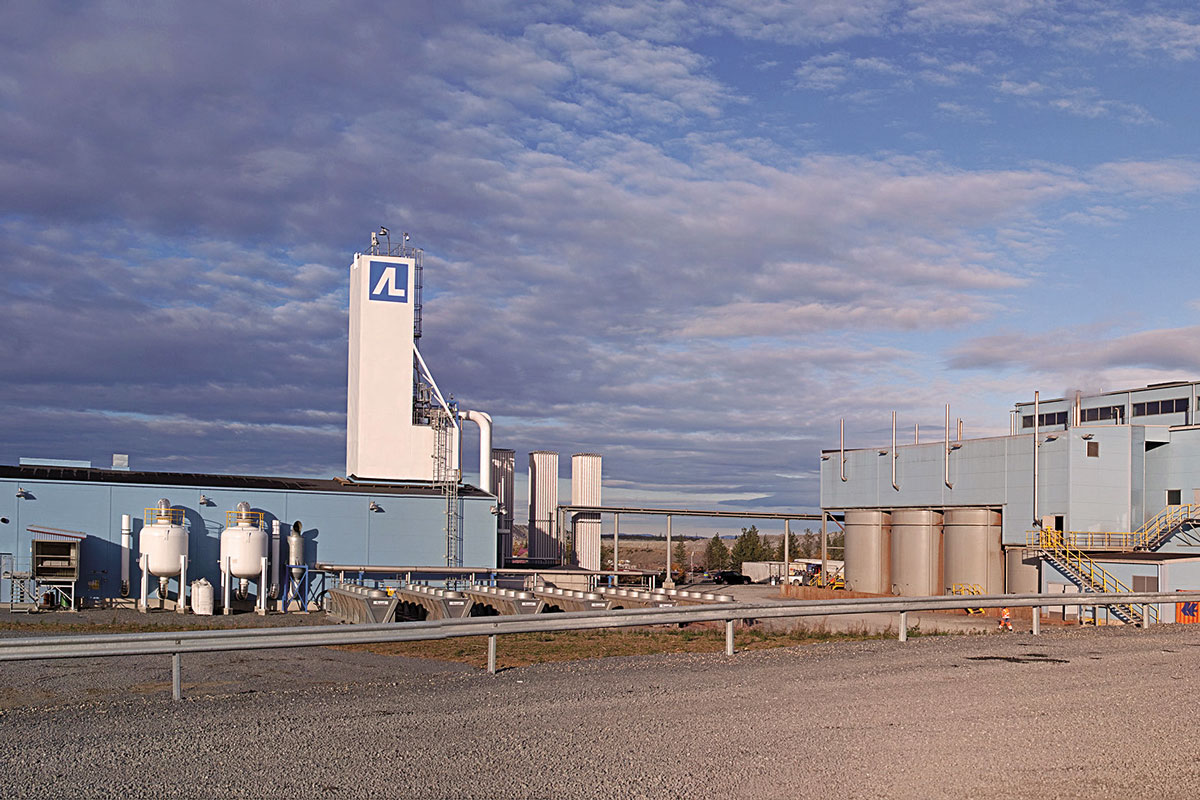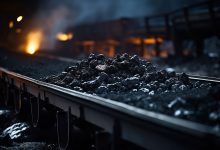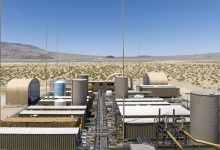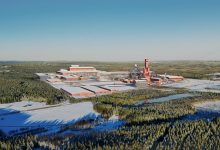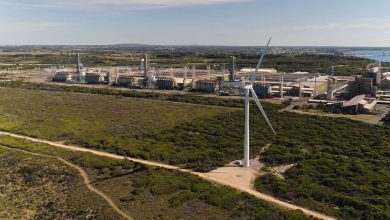Europe’s biggest gold mine gets bigger
The Kittilä gold mine in Lapland (Finland), will be expanded – Agnico Eagle mining company announced on February 15th. The Canadian company said investment worth 160 million euros will be made on projects including the construction of a one-kilometre-deep mine shaft.
“The shaft will make it possible to utilize the deeper parts of the gold deposit in an economically sensible way, and it will improve our energy efficiency as well as decrease our emissions. The efficiency advantage of the shaft combined with the raised production rate will improve the competitiveness of the Kittilä mine,” Agnico Eagle Finland’s Managing Director Jani Lösönen stated.
The new shaft will have hoisting capacity of 2.7 mtpa (2.0 mtpa of ore and 0.7 mtpa of waste), while the mill expansion involves installation of a secondary crushing circuit, new thickener and reactor capacity, and minor modifications to the existing grinding circuit and autoclave.
The improvements will boost average annual gold production by 50,000 to 70,000 ounces per year starting in 2021.
The company estimated the Kittilä mine would be in operation until 2035.
The Kittilä mine is located in the Lapland region of northern Finland, approximately 900 km north of Helsinki and 150 km north of the Arctic Circle. With a mine life estimated through 2034, Kittilä is Agnico Eagle’s longest-life mine; its proven and probable gold reserves contain 4.5 million ounces (30 million tonnes at 4.64 g/t gold) as of December 31, 2016. Ore has been mined from underground since 2010. The 4,500-tonne/day operation is expected to produce about 190,000 ounces of gold in 2017, and to average 205,000 ounces of gold annually from 2018 through 2019.
The Kittilä property covers 215 square km, stretching 25 km along the Suurikuusikko Trend, a major gold-bearing shear zone. The mine area includes a group of six gold deposits along a 4.5-km segment of the trend. The largest of the deposits are the Suuri, Roura and Rimpi zones that contain most of the current reserves and resources at Kittilä. The other deposits are the Etelä and Ketola zones and the new Sisar Zone. The Company is carrying out studies to evaluate the economics of increasing throughput rates at Kittilä to 2.0 million tonnes per year from the current rate of 1.6 million tonnes. This increased mining rate scenario could be supported by the development of the Rimpi and Sisar zones.
OPERATIONS UPDATE
In the third quarter of 2017, payable gold production totalled 50,415 ounces at a total production cost per ounce of USD 750 and a total cash cost per ounce of USD 753 on a by-product basis.
During the quarter, the mill processed 429,000 tonnes of ore (4,659 tonnes/day), with production costs of EUR 76 per tonne and mine-site costs of EUR 77 per tonne.
In the first nine months of 2017, payable gold production totalled 149,192 ounces at a total production cost per ounce of USD 738 and a total cash cost per ounce of USD 739 on a by-product basis.
During the first nine months, the mill processed 1,291,000 tonnes of ore (4,728 tonnes/day), with production costs of EUR 76 per tonne and mine-site costs of EUR 76 per tonne.
Geology
The region around the Kittilä mine is underlain by mafic volcanic and sedimentary rocks of the Kittilä Greenstone Belt oriented nearly vertical. This greenstone belt is similar to those hosting our Canadian deposits in Quebec’s Abitibi region and Nunavut. At the contact point between iron-rich and magnesium-rich rocks lies a 100- to 200-metre-thick structural zone known as the ‘Suurikuusikko Trend’. This trend hosts the Kittilä deposit, where multiple mineralized zones have been traced over a strike length of more than 25 km.
Mineralization
Work has focused on a 4.5-km segment of the Suurikuusikko Trend that hosts the six main zones of the known gold reserves and resources – Ketola, Etelä, Suuri, Roura, Rimpi and Sisar. The Sisar Zone is located to the east of the main Kittilä ore zone, and in close proximity to existing underground infrastructure. Kittilä ore is refractory, making gold extraction relatively difficult because the gold is generally locked inside the two main sulphide minerals – arsenopyrite and arsenic-rich pyrite.
Mining
Underground mining operations began at Kittilä in early 2010 at the Suuri and Roura deposits. The underground method is open stoping followed by delayed backfill. Approximately 13.5 km of tunnels are developed each year to ensure sufficient ore production is available to keep the mill supplied. After extraction, stopes are filled with cemented backfill or paste backfill to allow the safe mining of adjacent stopes. Ore is trucked to the surface crusher using underground haul trucks via the 4,400-metre-long ramp access system.
Processing
Approximately 4,500 tonnes of ore/day are fed to the processing plant. The ore is treated through grinding, flotation, pressure oxidation, and carbon-in-leach circuits. Kittilä has Agnico Eagle’s only pressure oxidation circuit (autoclave), which is required because of the ore’s refractory nature. Gold from the leach circuit is stripped from the carbon and recovered from solution using electrowinning, and then smelted in a furnace and poured into doré bars. Gold recovery of 86% is expected over the life of the mine.
Exploration
The main exploration ramp to the north is now completed and is being used for testing the extensions of the Roura and Rimpi Zones. Two internal ramps are being driven southward off the main exploration ramp for converting Sisar Zone and Rimpi deep mineral resources between 800 and 1,000 metres below surface.
The Company is evaluating increasing throughput rates at Kittilä to 2.0 million tonnes per annum (an increase of approximately 25%). This increased mining rate scenario could be supported by the development of the Rimpi and Sisar Zones.
The Kittilä mine in northern Finland is the largest primary gold producer in Europe. Kittilä achieved commercial production on May 1, 2009, becoming Agnico Eagle’s first mine to open outside of Canada. Since open-pit mining was completed in 2012, Kittilä has been an underground-only operation.
ABOUT AGNICO
Agnico Eagle is a senior Canadian gold mining company that has produced precious metals since 1957. Its eight mines are located in Canada, Finland and Mexico, with exploration and development activities in each of these countries as well as in the United States and Sweden. The Company and its shareholders have full exposure to gold prices due to its long-standing policy of no forward gold sales. Agnico Eagle has declared a cash dividend every year since 1983.
Agnico Eagle operates eight mines located in Canada, Finland and Mexico. Our operations continue to execute on our business strategy of delivering high quality growth while maintaining high performance standards in health, safety, environment and community development.
Agnico Eagle beat its 2017 guidance of 1.68 million ounces by producing a record annual gold output of 1.71 million ounces. All in sustaining costs for the year were USD 804 per ounce, lower than the most recent guidance of USD 845 per ounce. The company grew its mineral reserves last year (net of production) by 3.1% to 20.6 million ounces, with grades increasing by about 7.7%, due to the conversion of resources to reserves at Amaruq, in Nunavut, Canada. Gold production is expected to increase in 2018 and 2019 as the Meliadne mine in Nunavut starts up and production at Meadowbank, also in Nunavut, extends into 2019. Production is expected to reach about 2 million ounces in 2020.
Lower gold grades in the mining area for 2018 and 19 has meant lower expected production from the mine in the next two years – 10,000 ounces less this year and 20,000 next year. As a result, the Toronto-based company approved a plan in 2017 to increase throughput 25% from 1.6 million tonnes per annum to 2mtpa by 2021. Higher rates will be achieved through a new 1.4-kilometre shaft and a modification to the 4,500 tonnes per day mill, as well as other infrastructure and service upgrades.


